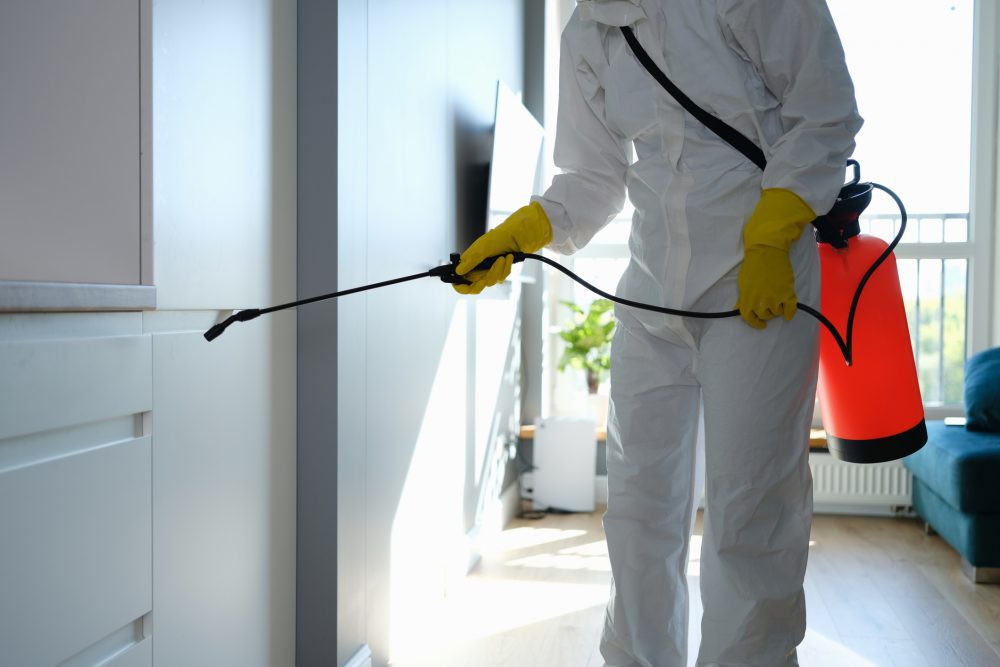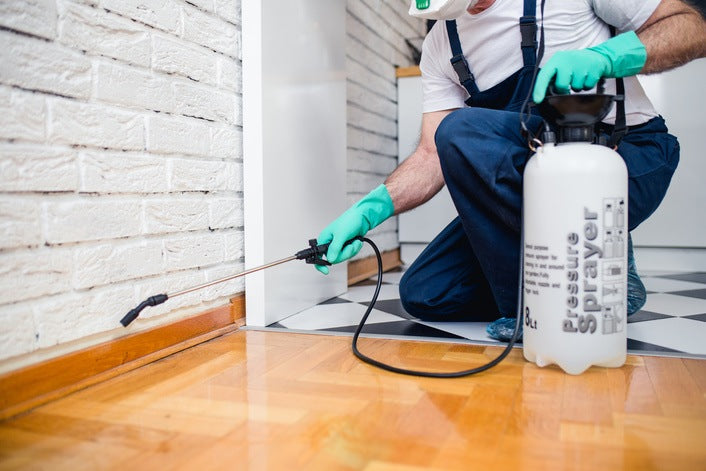Convenient Pest Control Near Me: Expert Solutions at Your Front door
Wiki Article
Knowing the pluses and minuses of several Pest Control Techniques
Pest control management is a critical aspect of keeping healthier and efficient situations, may it be in agricultural options, residential locations, or commercial companies. Utilizing the abundance of bugs and also the potential harm they are able to cause, it gets essential to check out various pest control management methods. However, only a few techniques are created equal, and knowing the pros and cons of various strategies is paramount to generating well-informed decisions. From chemical aerosols to biological control, actual barriers to barriers and baits, plus the alternative approach of incorporated pest management, each strategy includes a unique set of strengths and restrictions. Inside discussion, we will check out these strategies, considering their own effectiveness, dangers, green influence, and prospective disadvantages, while we seek to grasp a thorough understanding of pest control methods.Chemical Sprays: Effectiveness, Dangers, and Ecological Impact
Chemical aerosols, though commonly used for pest control, call for a consideration of their effectiveness, threats, and environmental influence. Regarding efficiency, substance aerosols may be very efficient in reducing insects. They contain ingredients that target certain insects, disrupting their own existence rounds and in the end eradicating all of them. These aerosols can provide an instant and immediate answer to pest infestations, making them a favorite option for lots of residents and businesses.However, it is important to recognize the potential risks associated with chemical aerosols. The chemical compounds utilized in these aerosols may be dangerous to both insects and individuals identical. Drive subjection to these chemical compounds trigger skin problems, breathing dilemmas, and more serious medical issues if ingested. Also, the overuse or abuse of substance aerosols can cause the introduction of pesticide opposition among pests, making them more difficult to regulate over time.
Additionally, environmentally friendly influence of chemical aerosols may not be disregarded. These sprays can contaminate land, h2o options, and the environment we breathe. They could hurt useful bugs, birds, as well as other wildlife, interrupting normal ecosystems. Additionally, the buildup of pesticide residues inside ecosystem may have long-lasting results regarding the as a whole biodiversity and ecological stability.
Biological Control: Good And Bad Points of employing Normal Predators
Making use of normal predators as a type of biological control offers both pros and cons in pest administration tricks. One of the most significant benefits would be that it really is an environmentally friendly strategy. Natural predators, such as for example ladybugs, lacewings, and parasitic wasps, feed on bugs, decreasing their populations obviously with no substance pesticides. This can help in order to maintain the environmental balance and preserves biodiversity in the ecosystem.Another advantage of utilizing organic predators would be that they can focus on specific pests. Unlike substance aerosols that will harm helpful bugs, organic predators have the capacity to find and prey on certain pest species. Pest control near me. This specific strategy can effectively get a grip on bug communities without creating injury to various other bacteria within the environment
However, additionally downsides to relying on all-natural predators for pest control management. One limitation would be that it might take longer observe results when compared to chemical techniques. Natural predators require time for you to find and establish on their own in the region, as well as their effectiveness can vary greatly depending on facets such as temperature and option of prey.

Physical Barriers: Advantages and Limitations of employing Nets and walls
Physical barriers, particularly nets and fences, supply several advantages and limits in bug control strategies. These physical obstacles can be always stop bugs from accessing crops, home gardens, or any other areas where they are able to cause harm. One of the most significant benefits of utilizing nets and walls is the effectiveness in order to keep bugs out. By creating an actual physical buffer, they are able to effectively prevent the entry of insects, such as pests, birds, or tiny mammals. This will considerably reduce the damage caused by bugs and help retain the quality and produce of crops. Furthermore, nets and fences tend to be green and never entail the aid of chemical pesticides or herbicides, which makes them a safer choice for both humans together with atmosphere.But you will also discover limits to using nets and fences for pest control management. One constraint is the price connected with putting in and maintaining these bodily barriers. Depending on the sized the spot to-be protected, the cost of components and work are considerable. Another constraint is nets and walls is great site almost certainly not successful against various types of bugs. Some insects, for example burrowing creatures or flying insects, might discover techniques to sidestep or over come these obstacles. Furthermore, nets and walls also can limit airflow and sunlight, which might have side effects throughout the development and growth of plant life.
Traps and Baits: Understanding Their Own Efficiency and Possible Drawbacks
Barriers and baits play a crucial role in pest control management methods, providing a highly effective way of collecting and doing away with pests while reducing reliance on chemical pesticides (Pest control near me). These practices are generally employed for managing rats or rodents, insects, also undesired pests. Barriers are designed to literally catch insects, stopping all of them from leading to further harm or spreading diseases. Baits, conversely, are compounds that attract pests and tend to be often laced with dangerous chemical substances to destroy all of themBarriers can be found in different forms, such as snap traps, adhesive barriers, and alive traps. Snap barriers tend to be widely used for getting rats or rodents, while adhesive traps work for capturing pests. Alive barriers tend to be gentle choices that allow the capture and moving of insects without harming them. Baits, having said that, are typically made of food or any other appealing chemicals that entice insects to take all of them. These baits are often combined with pesticides or toxins that kill the bugs.
One of several features of next page barriers and baits is the specific approach, focusing on particular pest varieties while minimizing damage to non-target organisms and the environment. They also supply a non-chemical alternative for pest control, decreasing the threats involving substance pesticide usage. However, like any pest control method, barriers and baits have actually their own disadvantages. They might not completely eliminate bug populations, demanding continuous tracking and upkeep. In addition, the effectiveness of barriers and baits may differ according to the pest species, their unique conduct, as well as the environmental problems. Careful placement and routine assessment are essential for ideal outcomes.
Integrated Pest administration: Benefits and issues of a Holistic Approach
The alternative method of Integrated Pest administration (IPM) offers many benefits and poses unique problems in the field of pest control management. IPM is targeted on the prevention, tracking, and control of bugs through a mixture of techniques that decrease the use of pesticides. One of the main benefits of IPM is actually the environmental friendliness. With the use of renewable techniques such biological control, cultural procedures, and environment manipulation, IPM reduces the dependence on chemical pesticides or herbicides, resulting in a safer and more healthy ecosystem both for humans and wildlife. Furthermore, IPM encourages long-lasting pest management solutions, since it emphasizes the necessity of recognizing bug conduct and environment. This knowledge enables targeted interventions that address the basis factors behind bug infestations, rather than just managing the observable symptoms. But applying IPM are difficult. It takes a comprehensive understanding of pest biology, as well as the capability to precisely monitor and identify pests. Moreover, IPM often requires a substantial financial investment of the time and methods, since it requires standard monitoring additionally the utilization of multiple strategies. Nonetheless, the great benefits of IPM, including decreased pesticide use and long-lasting pest control, enable it to be a valuable strategy in neuro-scientific pest control.Bottom Line

Report this wiki page